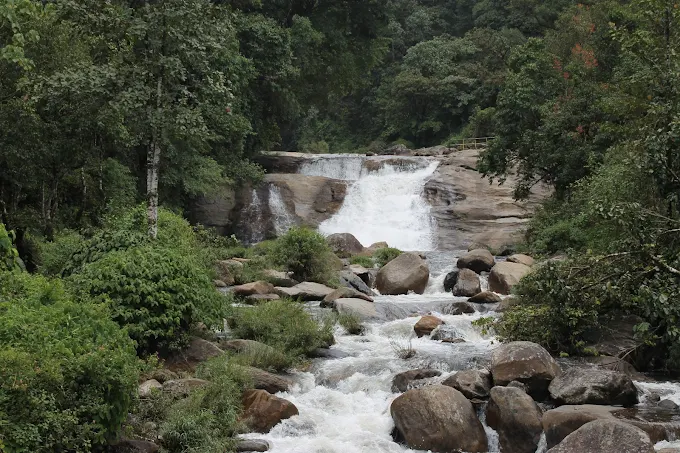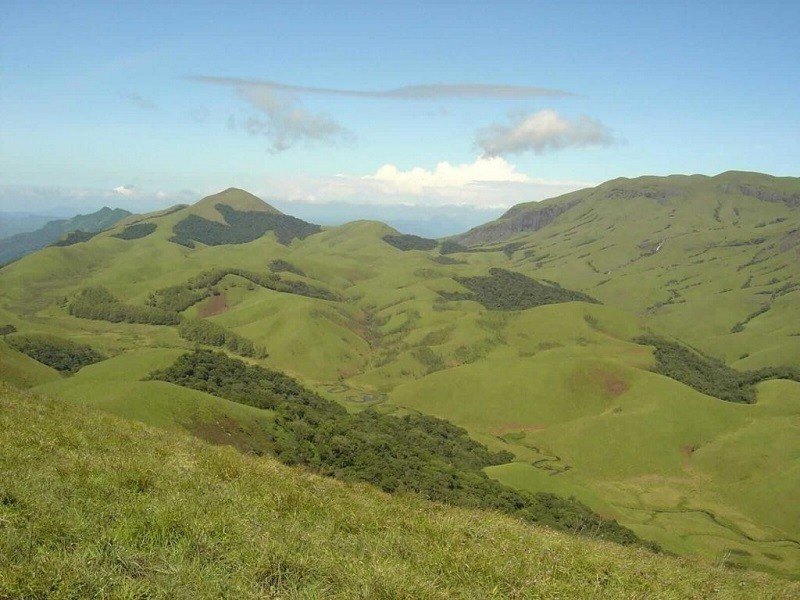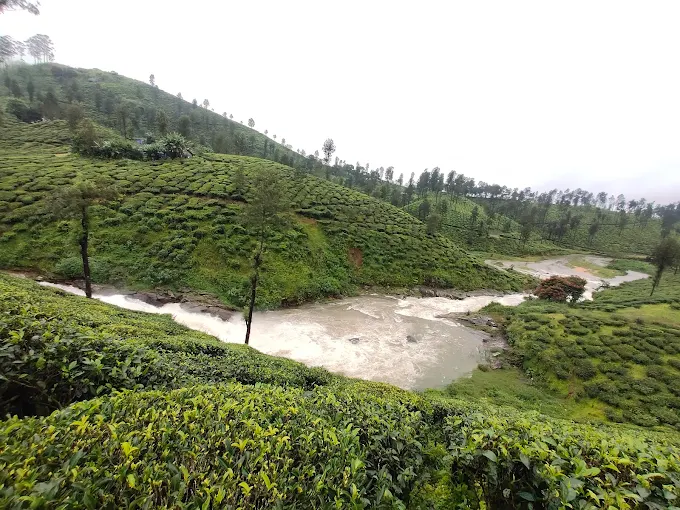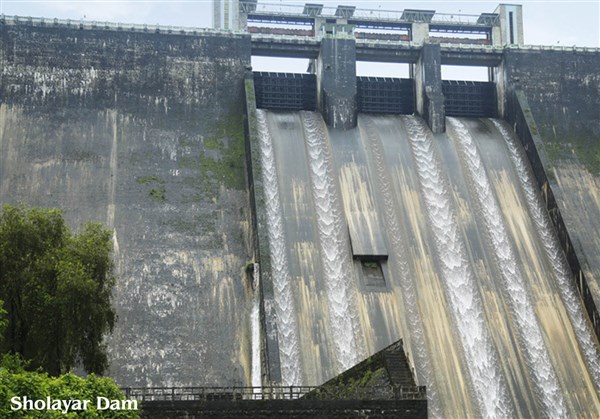Nestled in the dense forests of Valparai, Chinna Kallar Falls (also spelled Chinnakallar Falls) stands as one of the wettest places in India, second only to Mawsynram and Cherrapunji. This secluded waterfall draws adventurous travelers into its mist-shrouded allure, framed by emerald greenery and a rustic hanging bridge that adds a hint of thrill to the experience.
This guide offers a complete overview of Chinna Kallar—its routes, transport options, entry details, seasonal cautions, and eco-travel tips.
Where is Chinna Kallar Falls?
Chinna Kallar Falls is located approximately 14 km from Valparai town, near Chinna Kallar village, in Tamil Nadu’s Coimbatore district. Positioned within the rain-soaked catchment of the Western Ghats, it receives one of India’s highest annual rainfall levels.
Access to the fall begins from a forest checkpost roughly 7 km from Valparai; beyond that, visitors continue by road through forest terrain, followed by a 600-metre trek through dense vegetation to the waterfall.
Routes & How to Reach
From Coimbatore or Pollachi:
- Pollachi → Valparai: ~65 km via the scenic SH-78 ghat road (with about 40 hairpin bends).
- Continue 7 km inside the forest zone after Valparai to reach the official forest checkpost.
Trek to the Falls:
- From the checkpost, a 600-metre hike along a narrow trail leads to the site.
- The path includes crossing a hanging wooden suspension bridge, offering dramatic waterfall views.
Local Transport Options
- Buses: Public buses run from Coimbatore or Pollachi to Valparai. No direct transport to the falls.
- Auto-rickshaws or shared jeeps: Available from Valparai town to the forest entry checkpoint.
- Trekking: Visitors must walk the final stretch; local guides are recommended.
Entry & Regulations
| Feature | Details |
|---|---|
| Entry Fee | ₹130 per person |
| Vehicle Entry Fee | ₹50–₹80 approx. |
| Timings | 9:00 AM to 4:00 PM (last entry ~3 PM) |
| Swimming | Not allowed directly under the falls |
| Guide Required | Optional but recommended |
- No toilets or shops are available nearby.
- Bring your own water, snacks, and essentials.
Rainy Season Alerts & Water Flow
- Chinna Kallar receives one of the highest rainfalls in India.
- Water volume peaks during June–September, creating strong flow but also slippery, leech-prone paths.
- The best season to visit is November to March for moderate water flow and safe trekking conditions.
- Always check weather and forest conditions before planning your trip.
What to Expect
- A short 600-metre trek through forest trails
- A suspension bridge near the falls offering a unique viewpoint
- A small, powerful waterfall plunging into a natural basin
- Mist, dense foliage, and occasional wildlife sightings
Photo & Safety Tips
- Wear sturdy footwear with good grip.
- Use insect repellent and wear leech socks in rainy months.
- Avoid visiting during heavy rains due to water surges.
- Keep valuables dry and avoid getting too close to the edge of rocks.
- No drones or loud music—respect nature and forest guidelines.
Suggested Itinerary
- Start early from Valparai.
- Travel 10 km to Chinna Kallar forest entry gate.
- Pay entry and vehicle fee at the checkpost.
- Proceed on foot through the trail to the waterfall.
- Spend 1–2 hours enjoying the waterfall and surroundings.
- Return before 4:00 PM to exit before the gate closes.
Nearby Attractions
- Nallamudi Viewpoint – Sweeping views of green valleys
- Loam’s Viewpoint – Ideal for photography near Aliyar Ghat
- Monkey Falls – Roadside waterfall en route to Pollachi
- Sholayar Dam – Scenic picnic spot surrounded by hills
- Tea Estate Walks – Experience plantation life around Valparai
Summary
Chinna Kallar Falls is a hidden rainforest treasure near Valparai that promises adventure, tranquility, and immersive natural beauty. The short trek, misty backdrop, and roaring water make it a must-visit for those who enjoy offbeat trails and quiet forest walks.
Be sure to go prepared—with proper footwear, awareness of the season, and respect for the ecosystem. In return, you’ll discover one of Tamil Nadu’s most enchanting waterfalls tucked deep within the lush folds of the Western Ghats.






